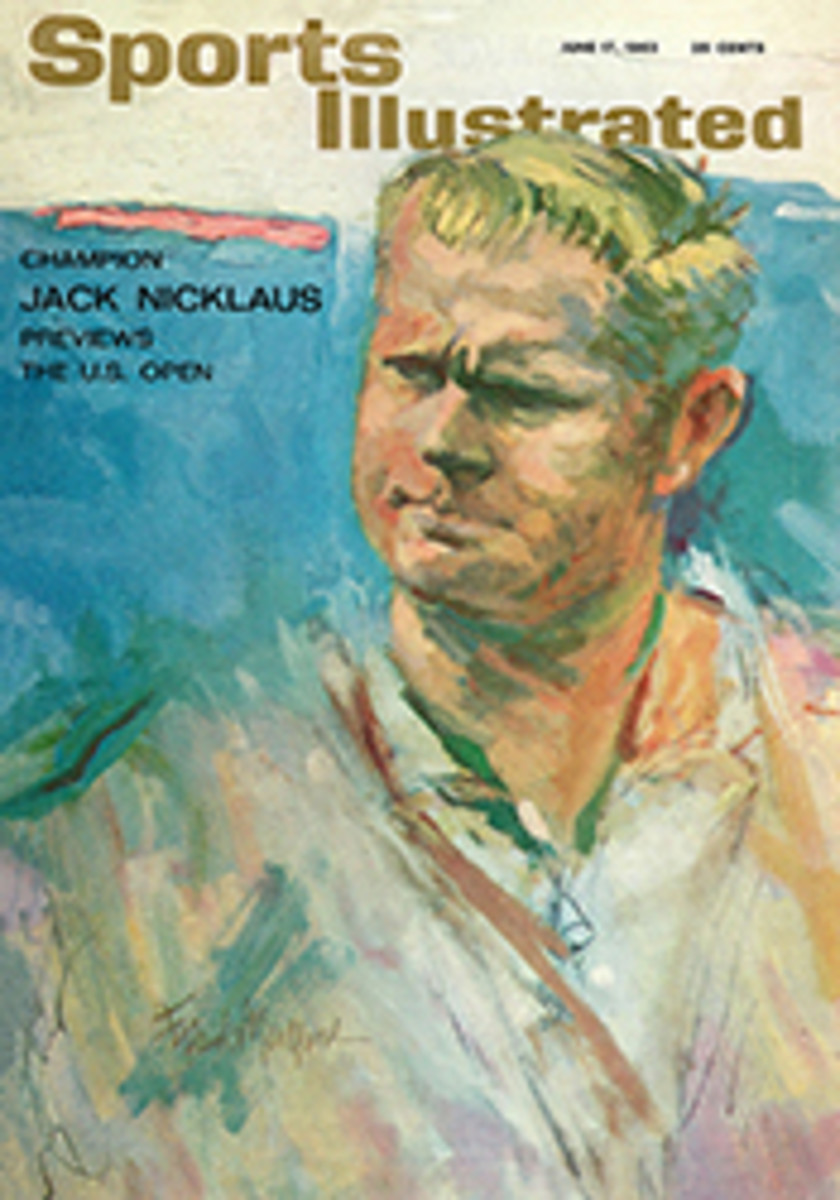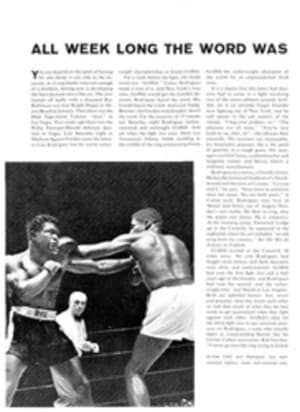
Women of the world, rejoice!
Because it is not (not seriously anyway) split into two camps, one labeled "amateur," the other "pro," international competition in women's tennis today is far more exciting than that of the men. Yet up to now there has been no female counterpart of the Davis Cup. The Wightman Cup, donated in 1923 by former U.S. Champion Hazel Wightman, was meant to be international in scope, but somehow the donor's intention was sidetracked, and for years now the Wightman Cup has been contested only by Britain and the U.S.
When George Barnes, as president of the USLTA, appointed a committee in 1960 to investigate the sorry state of amateur tennis one of its few sound suggestions was to enlarge the scope of the Wightman Cup.
"I felt," says Mary Hardwick Hare, the committee member who made the suggestion, "that the picture in international women's tennis had expanded to such an extent that a top tournament could no longer be confined to just Britain and America."
Mary Hare, who has lived in the U.S. for close to 30 years, has played as an amateur against such champions of the past as Suzanne Lenglen and Helen Wills, and as a teaching professional against more recent stars, from Alice Marble to Maria Bueno. Although a British subject, she has long served as an official in the U.S. association. Mary's suggestion of an international cup for women was the only proposition that was passed without argument at the meeting of the International Lawn Tennis Federation in Paris a year ago. Rather than alter the now time-hallowed status of the Wightman Cup, however, the federation voted to present a brand-new trophy for the international event in honor of its own 50th anniversary.
Next week women from 16 nations will open the first competition for the women's team tennis championship of the world when Federation Cup play begins at the Queen's Club in London. Unlike Davis Cup play, which drags on across months, the Federation championships will be decided each year in a different country at a single tournament at a single time and in a single place. It will, hopefully, be timed to come just before or after a big national tournament like Wimbledon, which already has attracted players of the various nations, thus eliminating extra travel costs. Each country will be allowed to enter a team of two or three players, and each team will play a tie of two singles matches and one doubles match in each round of the tournament.
This year the four seeded nations are Australia, the U.S., Britain and South Africa, and the formidable girls from down under, Margaret Smith and Lesley Turner, are expected to dominate the play. But with competitors from the lesser nations given a chance at last to oppose them in sustained team play, the favored Australian champions may find their hands full.
A major threat will come to them from two girls new to international tennis: Margaret Hunt, 21, and Annette van Zyl, 17. Both are from Pretoria, South Africa, and either could deliver a shock or two. Annette is the "Little Mo" of her country's tennis-playing girls. She and Margaret probably will be judged the prettiest in the new tournament by the sidelined men.
While perhaps not the prettiest, one of the most potent threats will be Czechoslovakia's pleasant Vera Sukova, who got to the Wimbledon finals last year by beating both Darlene Hard and Maria Bueno, only to twist her ankle and give Karen Hantze an easy win. Two weeks ago Vera beat Margaret Smith in the tournament in Paris. The Czech champ will be backed by teammate Marketa Prochova, a 19-year-old whose powerful service and volleys make her a strong doubles partner.
Besides these, there will be such seasoned competitors as England's Ann Haydon Jones, America's Darlene Hard and France's Janine Lieffrig and Fran√ßoise Durr. During the past couple of years these French girls have emerged as two of the most feared opponents in Europe, despite the fact that Janine can play tennis only during holidays—she is a full-time schoolteacher.
Like county week
Mary Hare got her idea for the form of the tournament from what is known as "county week" in England, an annual event in which players from all the English counties compete fiercely against one another in teams. A contest like the Davis Cup seemed not only impractical financially and otherwise but hardly as much fun, so the proposal to extend the Wightman Cup along county week lines was put forward. To get it going Mary Hare was required to write something like 100 letters to the various associations affiliated with the International Lawn Tennis Federation and to a number of prominent tennis patrons. "We had to be very careful, as a young group trying to push another competition," Mary remembers, but she need not have worried—hardly anybody opposed the idea, although many thought it would not come off. Hazel Wightman herself lent weighty support to the proposal.
That Federation Cup competition will eventually overshadow the Wightman Cup competition seems almost a certainty, particularly in view of the enthusiasm it already has engendered. If this seems a little sad to traditionalists it is at the same time proof of a growing world. "I don't think it wise that women, bless 'em, should try to copy the male pattern," one British gentleman wrote Mary Hare, comparing her plan to the Davis Cup. "They often have better ideas."

